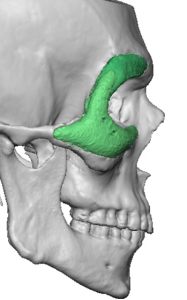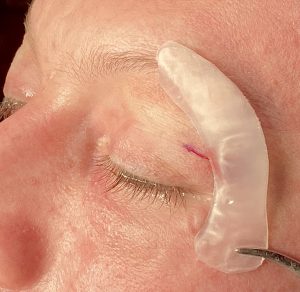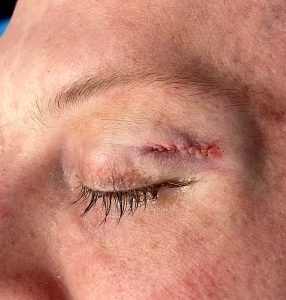Background: The periorbital rim of bone around the eye can be aesthetically augmented but how it can be done is not well known. The only standard orbital rim implant is the tear trough implant, a limited spot implant of the infraorbital rim. Its original use was to treat an external indentation at the inner half of the infraorbital rim either from a congenital origin or from aging. The use of the tear trough implant, while still effective, has largely been supplanted today by either injection fat grafting or fat transposition during a lower blepharoplasty.
But this limited infraorbital rim implant doesn’t have a role to play when larger orbital rim augmentations are desired. More complete infraorbital rim augmentations are commonly done as part of a larger infraorbital-malar (IOM) implant that extends out onto the cheekbones. Superior orbital rim or brow bone augmentations are also commonly done through custom implant designs as well as no such standard brow bone implants are yet available.
But the rarest periorbital rim augmentation is the near circumferential or 270 degree ‘goggle’ implant design. This is used when one wants to bring out the entire orbital box for protruding eyes or when the upper face is very narrow. Placement of more complete periorbital implants are done through eyelid incisions, most commonly the lower eyelid supplemented with an upper eyelid incision as well. But once such a custom periorbital implant is placed can additional rim augmentation be added later?






Key Points:
1) Custom periorbital implants are the only method to build up the bone around the eye to make it more prominent.
2) Secondary or tertiary periorbital augmentation can be done through a custom onlay implant approach.
3) The upper eyelid may be the preferential incisional approach for secondary onlay periorbital augmentation.
Dr. Barry Eppley
World-Renowned Plastic Surgeon







